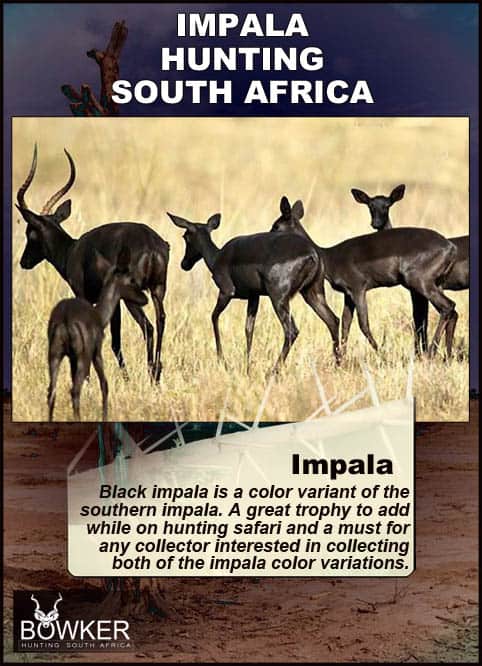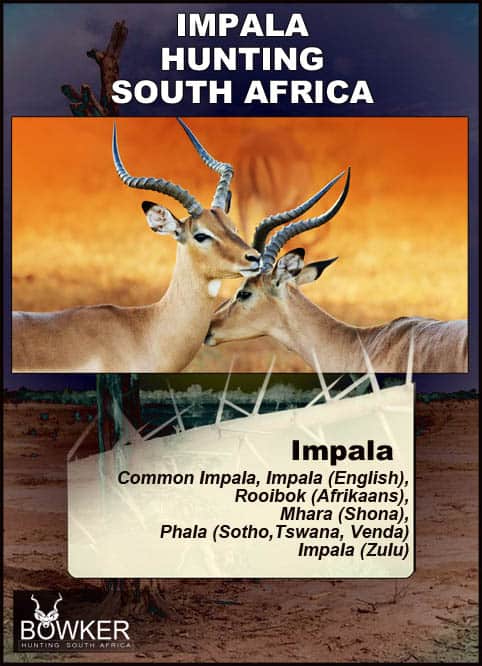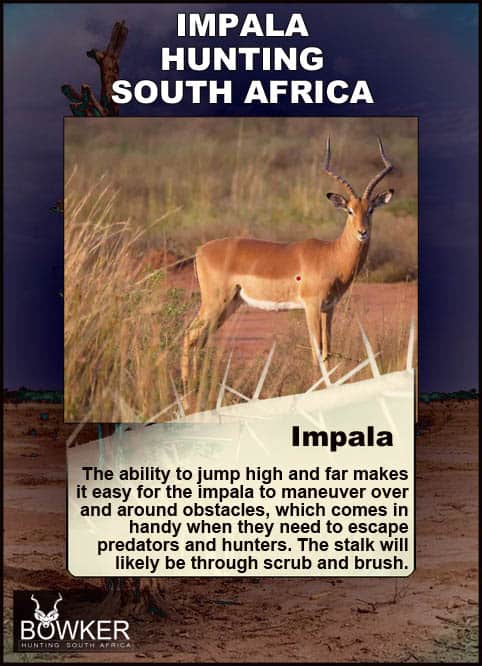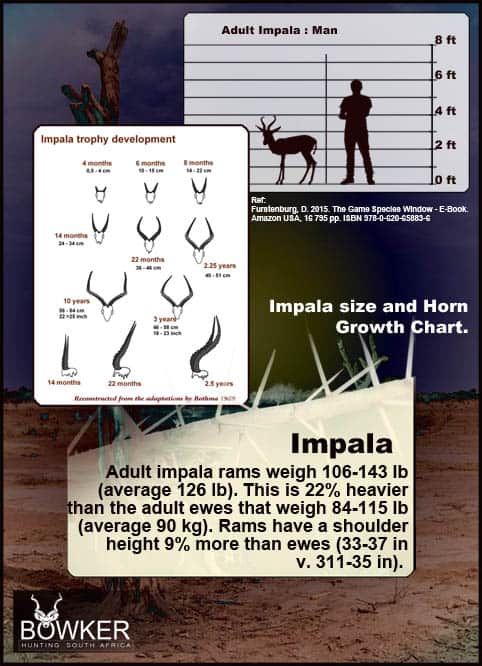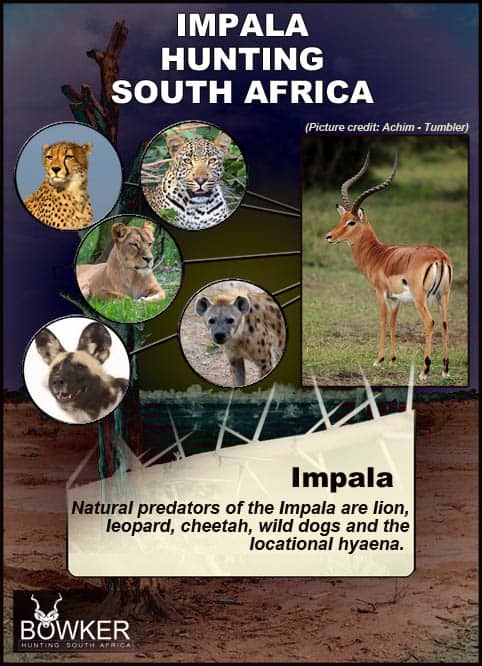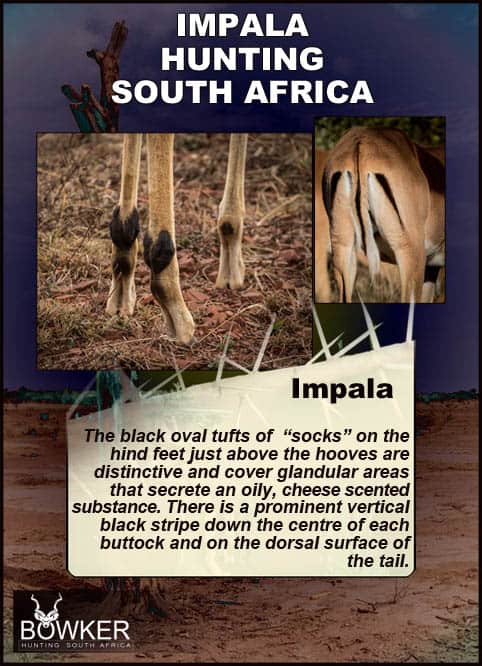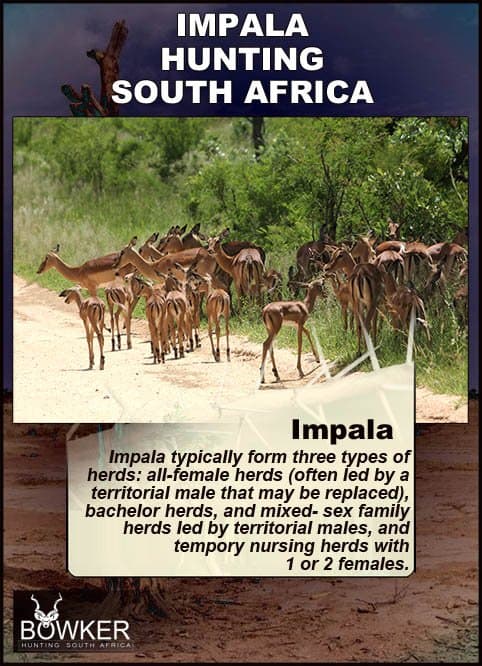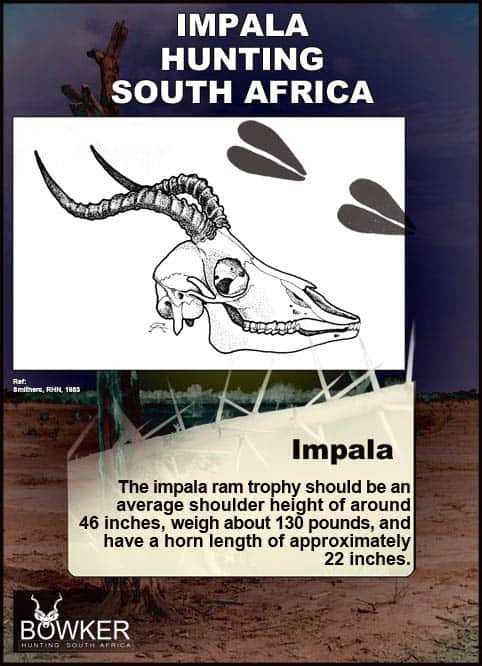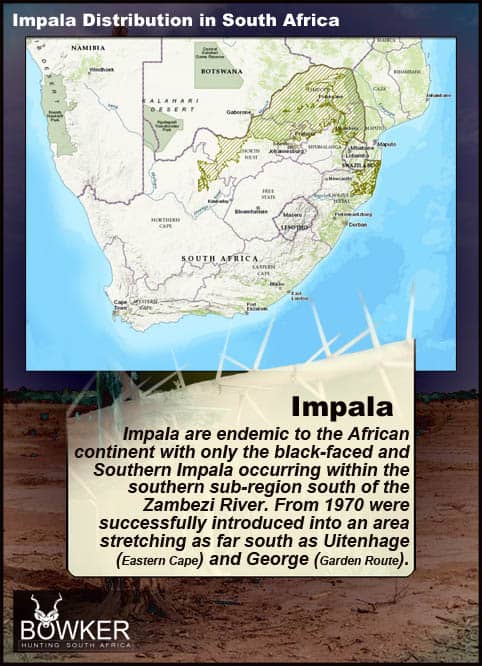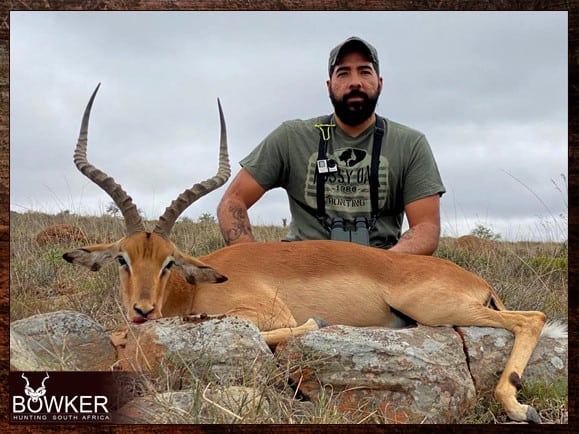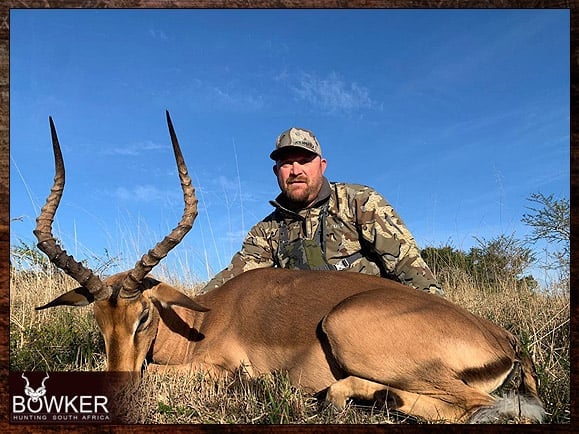
Summary
Impala hunting is conducted in woodland and savanna areas.
A trophy most hunters take on their first African hunt.
The smooth skin and two-tone red coloration make for a unique trophy.
There are no seasonal restrictions on an impala in Eastern Cape, South Africa. Nick Bowker Hunting offers impala African safaris year-round.
Hunts are conducted in savanna and woodland.
Hunting impala is more favorable when looking for bachelor herds of rams rather than breeding herds.
Impala has terrific eyesight.
Safaris are conducted from Hopewell Lodge in the Eastern Cape.
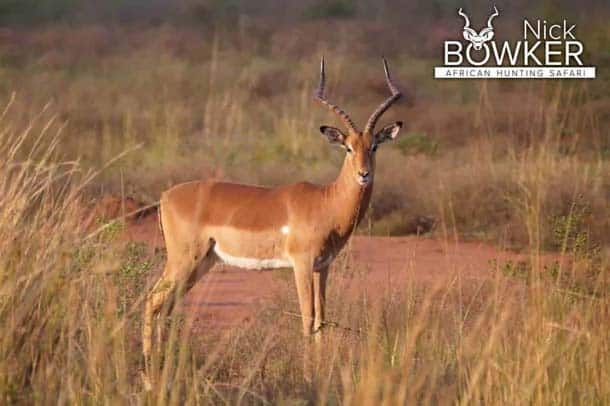
Table of Contents
Impala Trophy Fees in South Africa – 2025
The average price of an Impala is $450. An African safari hunt cost often includes an Impala Trophy.
The Black Impala is also an excellent addition to any package—our Impala prices 2024.
| Species | Price |
| Impala | $450 |
| Black Impala | $2500 |
All-Inclusive $5000 Starter Plains Game Package for seven trophies and eight days hunting. (Inclusive of an Impala Trophy)
- Gemsbok safari hunt
- Impala
- Black Wildebeest safari hunt
- Springbok
- Warthog
- Blesbok safari hunt
- Mountain Reedbuck
The impala trophy hunting package includes a licensed hunting guide, a hunting license, and all permits. Impala hunts are also included in our cull packages. Day fees are also included in the package price.
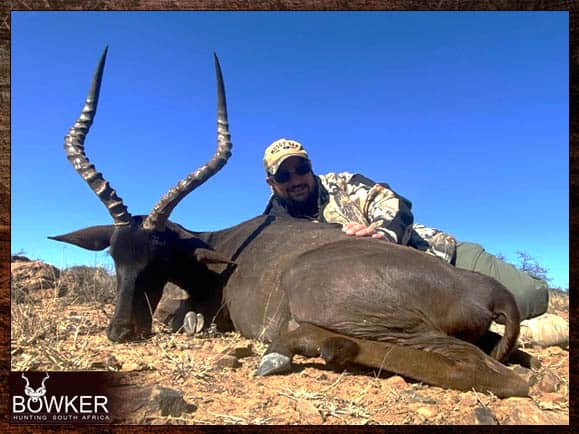
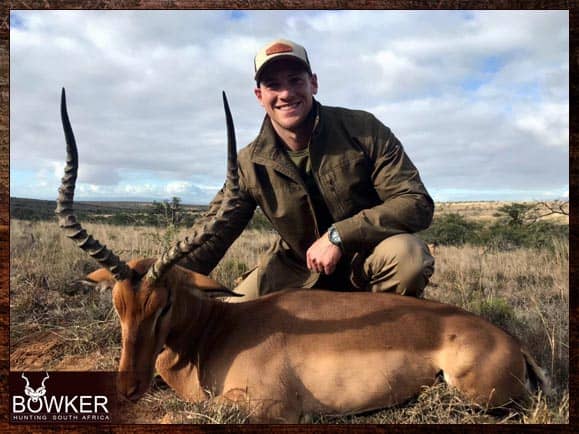
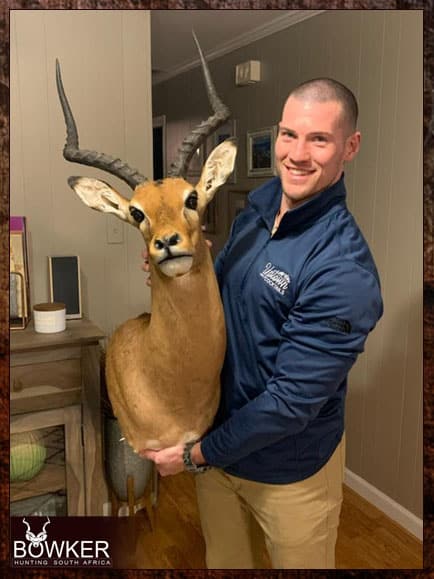
Impala Hunting in South Africa
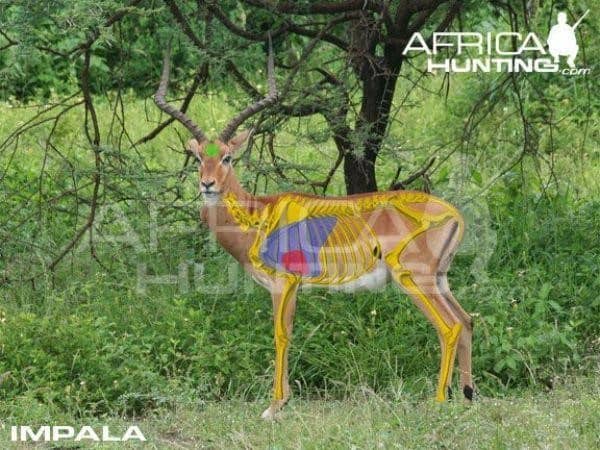
Shot placement must be in the bottom third of the animal directly above the front shoulder. This will ensure a heart or lung shot. Avoid head and neck shots, which are high risk.

Your Impala ram trophy should have an average shoulder height of around 46 inches, weigh about 130 pounds, and have a Horn Length of approximately 22 inches.
The minimum Safari Club International score for an impala is 52. Add the length of each horn and the circumference of the bases to get your SCI score.
A trophy most hunters want to take on their first African hunt. The smooth skin and two-tone red coloration make for a unique trophy.
They easily jump sheep and cattle fences and are free-ranging outside the high-fenced areas.
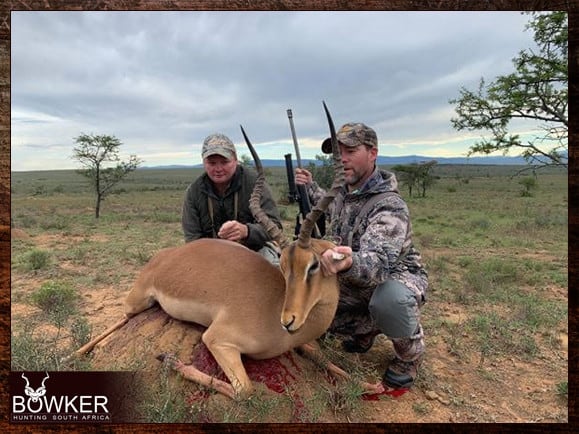
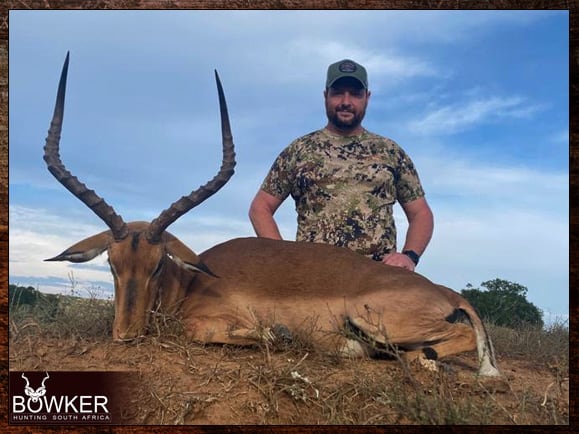
Impala is widespread across the Eastern Cape. Impala lives in open woodland with sufficient water and denser woodland areas.
A lot of glassing from a high point to identify a trophy to start with.
The stalk will likely be through scrub and brush in quite dense woodland. Pick your line carefully and take the wind into account. Move slowly from thicket to thicket until a suitable range is achieved.
A vigilant Plains game animal. Several stalks can be required. Impala snorts loudly whenever they sense danger. At this point, the game is up.
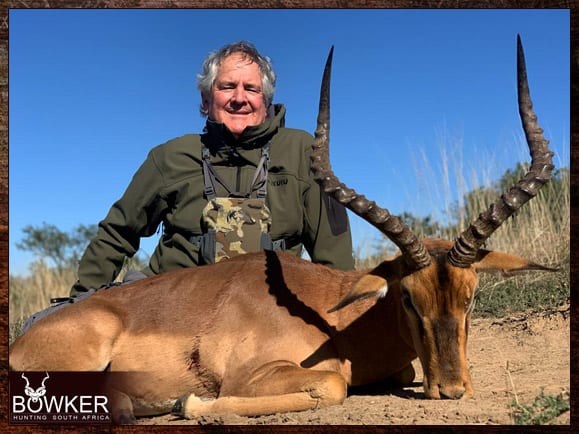
Trophy Judgement and Rifle Caliber for Hunting Impala

A 7mm, right on up to the 30 calibers, is the best choice of caliber. The bottom third of the animal up the front leg is where you should aim.
For those hunters who wish to avoid going through the red tape of bringing a rifle into South Africa, Nick Bowker Hunting has 300 Magnums fitted with suppressors.
Mounted on the rifles are Swarovski tactical optics. We have hand-loaded Hornady ELD-X ammunition.
An excellent safari-style hunting adventure.
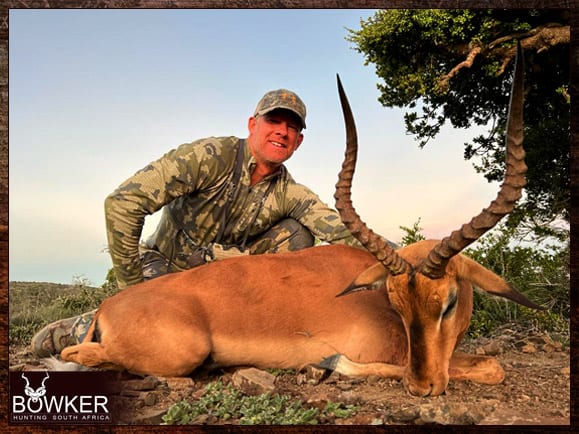
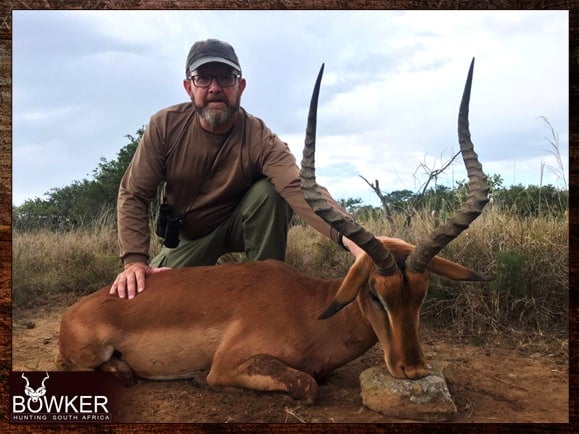
This graceful, medium-sized antelope is a sociable herd animal that frequents open woodlands and bushveld.
A browser and a grazer will never venture far from water, as he must drink daily.
The rams only carry lyre-shaped horns, but the herd’s propensity to bunch together in the dense brush while not still can make it easy to make a mistake.
The hunter should look for the ram that stands out in the bachelor groups.

Difference Between Male and Female
Impala males are easily recognized as they have horns, while females don’t. Females are also smaller.
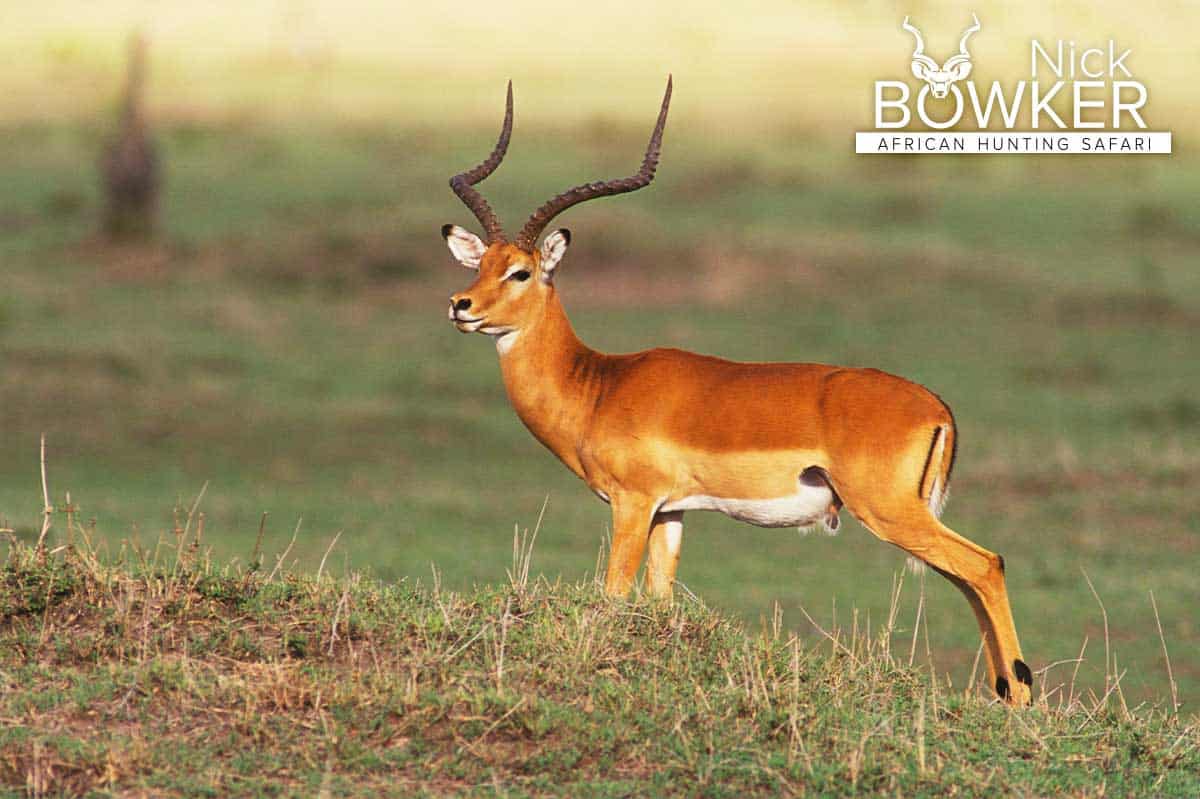
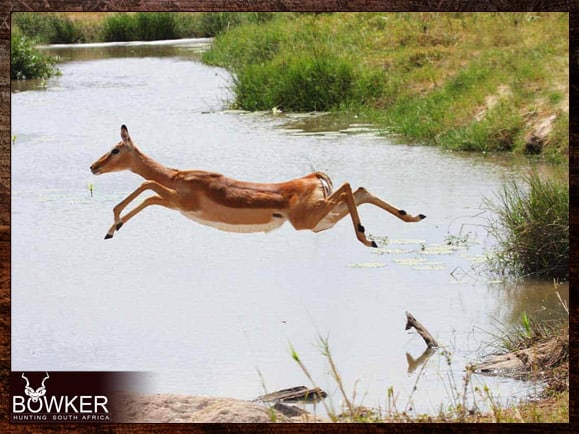
Interesting Facts About Impala for Hunts

- Impala can leap up to 10 feet in the air and travel as far as 33 feet in one bound. For an animal with an average height of 3 feet and a length of around 4 feet, this is a considerable distance.
- This agility makes maneuvering over and around obstacles easy for the impala. This comes in handy when they need to escape predators such as lions.
- Impala undertakes mutual grooming. One impala will groom a herd member. Who will return the favor by grooming in precisely the same spot for the same time.
- Impala is a synchronous breeder. This means they tend to mate and give birth around the same time each year.
- Impala breeding usually corresponds with the wet season. They typically mate in May, at the end of the wet season. Giving birth in November during the rainy season.
- That predictable breeding schedule usually gives impala calves their best shot at survival in summer.
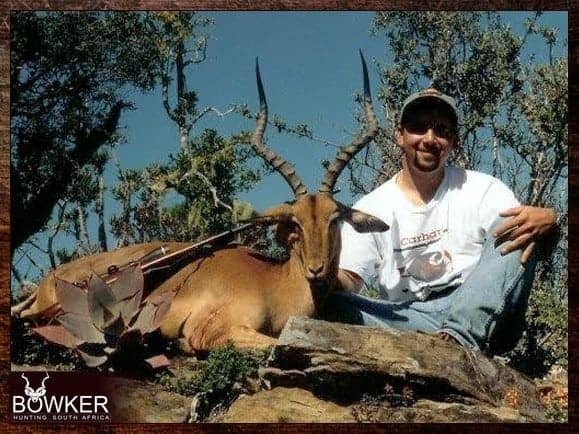
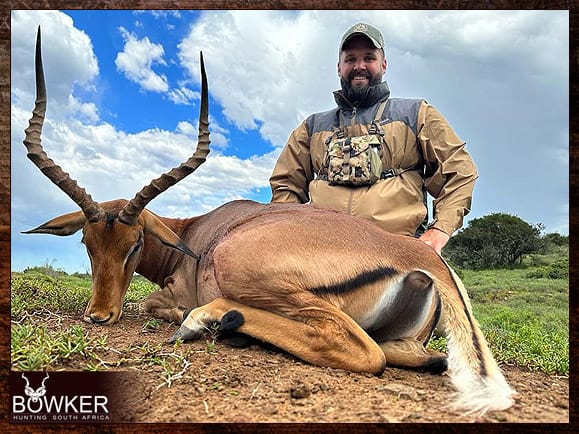
- Impalas and other prey face more risk in the dry season when dwindling food and water supplies force predators and prey toward the exact geographic locations.
- Three of the main prey animals on the southern African savanna (impala, zebra, and wildebeest) can recognize one another’s warning cries.
- That works to everyone’s advantage if a predator is close. If a zebra, for instance, sounds like a warning call, then any nearby zebra, wildebeest, or impala know to flee.
- Rumor has it pregnant impalas can delay giving birth for up to a month if the wet season is late.
- That belief is probably a fallacy.
- Impala can look similar to the red lechwe to the untrained eye and can’t be mistaken for the “Harley-Davidson” (the colloquial name for the red hartebeest).
- Impala are often hunted along with Blue Wildebeest.
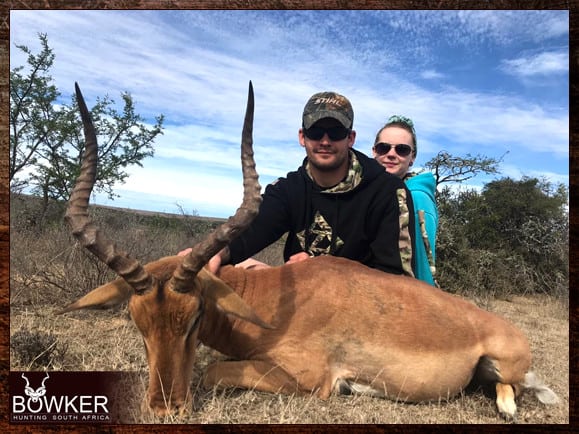
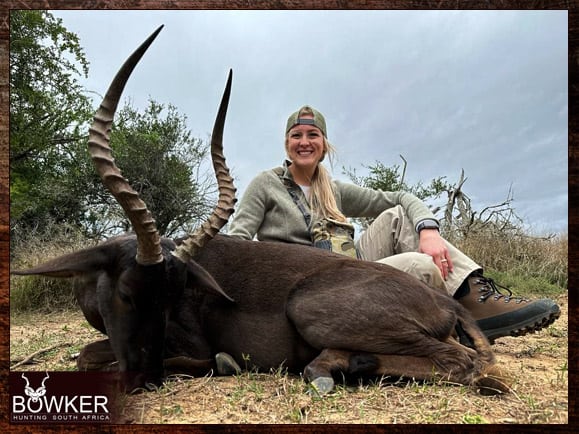
About the Impala for Hunters
Description of impala
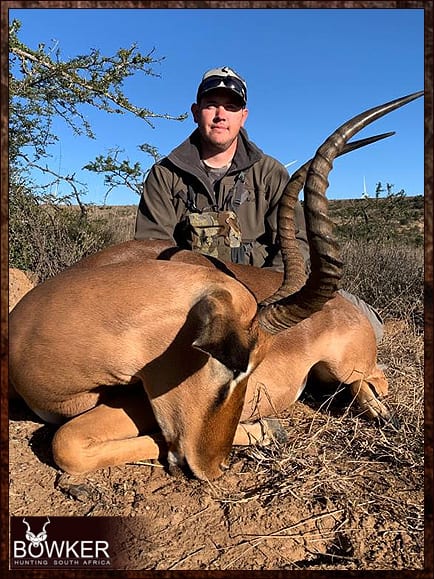
The Impala or Southern Impala is found in woodlands and sometimes on the interface between forests and savannahs; it inhabits places close to water.
The Impala is active mainly during the day. Activity tends to cease during the hot midday hours; they feed at night.
Three distinct social groups exist. Territorial males, bachelor herds, and family herds.
The territorial males hold territories where they may form harems of females. Regions are demarcated with urine and feces and defended against male intruders.
The glossy coat of the Impala shows two-tone coloration. The reddish-brown back and the tan flanks. This is in sharp contrast to the white underbelly.
Additional features include white rings around the eyes and a lighter chin and snout.
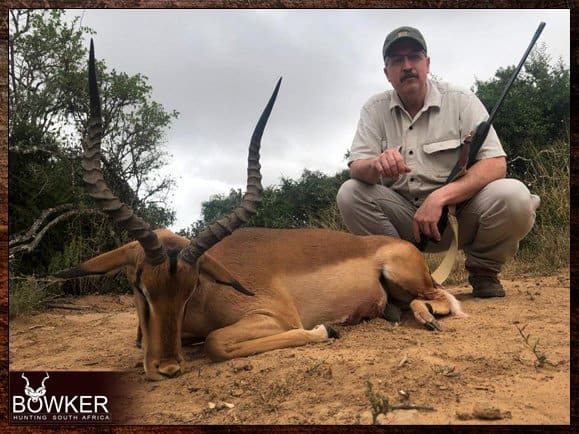
Information for impala hunting
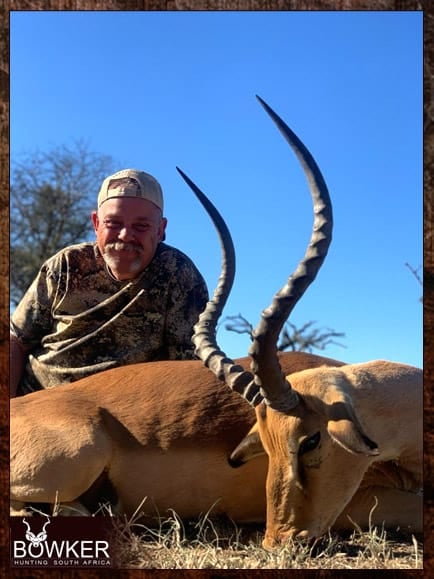
Males grow slender, lyre-shaped horns 18 – 26 inches long. The horns are strongly ridged and circular.
Their arch-like structure allows the interlocking of horns, helping a male throw off his opponent during fights. Horns also protect the skull from damage.
Male impalas typically only become territorial for about four months of the year. During this time, they’ll jealously protect their harems of female Impala and young.
If one male impala loses a fight to another, they’ll be forced to surrender their herd and join a bachelor herd instead.
Impala males who fail to mate form bachelor herds of 2 to 20 individuals.
Defending a territory requires so much time and effort that the Impala ram loses condition so much that they can only hold a region for 8 days.
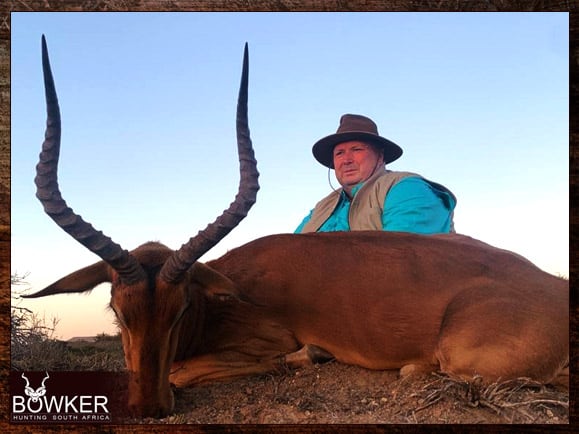
Frequently Asked Questions for the Hunter
How much does it cost to hunt an Impala?
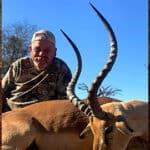
Trophy fees for a standalone Impala hunt are between $400 and $500. Daily rates vary between $250 and $500 per day.
Included in the Impala trophy fee is a licensed guide. As well as a hunting license and all permits.
An Impala trophy is often included in a plains game package. Package prices vary from $ 3,000 to $10,000, depending on location and size. Packages include 5 – 7 trophy animals, accommodation, meals, and daily rates.
How to hunt an Impala?
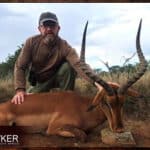
Impala hunting is in the early mornings and late evenings, spotted from an elevated vantage point in the thick brush and then stalked. Alternatively, hunters use ambush techniques at watering holes or as they move back to cover from feeding.
Where do you shoot an Impala?
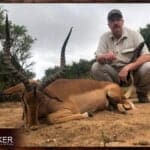
Shot placement must be in the bottom third of the animal directly above the front shoulder. This will ensure a heart or lung shot. Avoid head and neck shots, which are high-risk.
What is a trophy Impala?
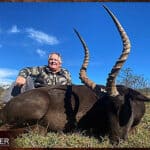
Impala trophies have a Horn length of approximately 22 – 24 inches. The minimum qualification score under Safari Club International for an Impala is 52. Add the length of each horn and the bases’ circumference to get your SCI score.
How do you judge an Impala trophy?

As with all African animals, a thick, heavy, darkened neck is the first sign of maturity and often the most visible maturity characteristic when observing at a distance.
Look at the bases and ensure they are solid and prominent. A good symmetrical shape with smooth tips signifies an old ram and a trophy worth considering. The ram should stand out in the herd.
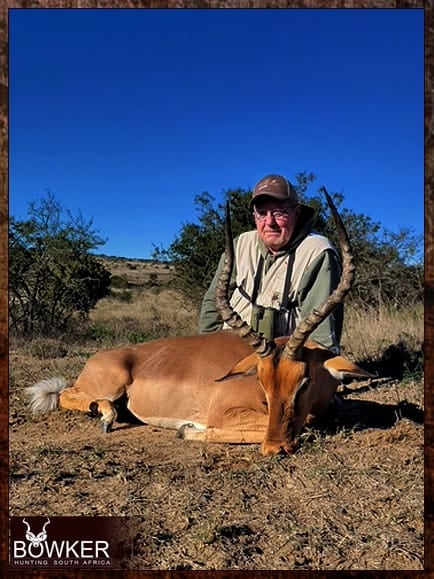
Seasonal Restrictions
When can you hunt Impala in South Africa?
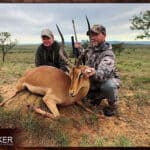
There are no seasonal restrictions on trophy impala hunting in the Eastern Cape of South Africa.
What Caliber is Recommended for Impala Hunts?

We recommend the flat shooting 300 Winchester or 7mm magnums with high-quality tactical scopes and a suppressor. Distances can be longer for this hunt.
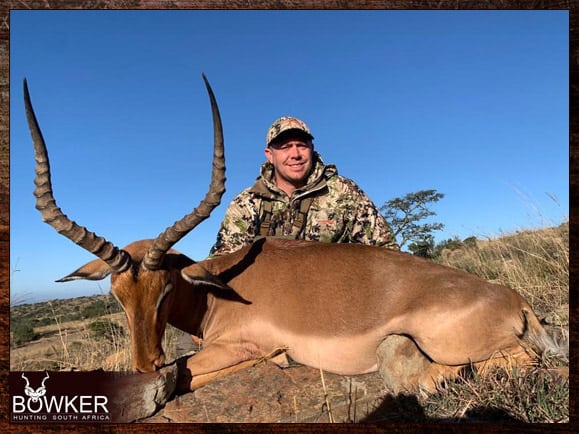
The Impala in pictures
